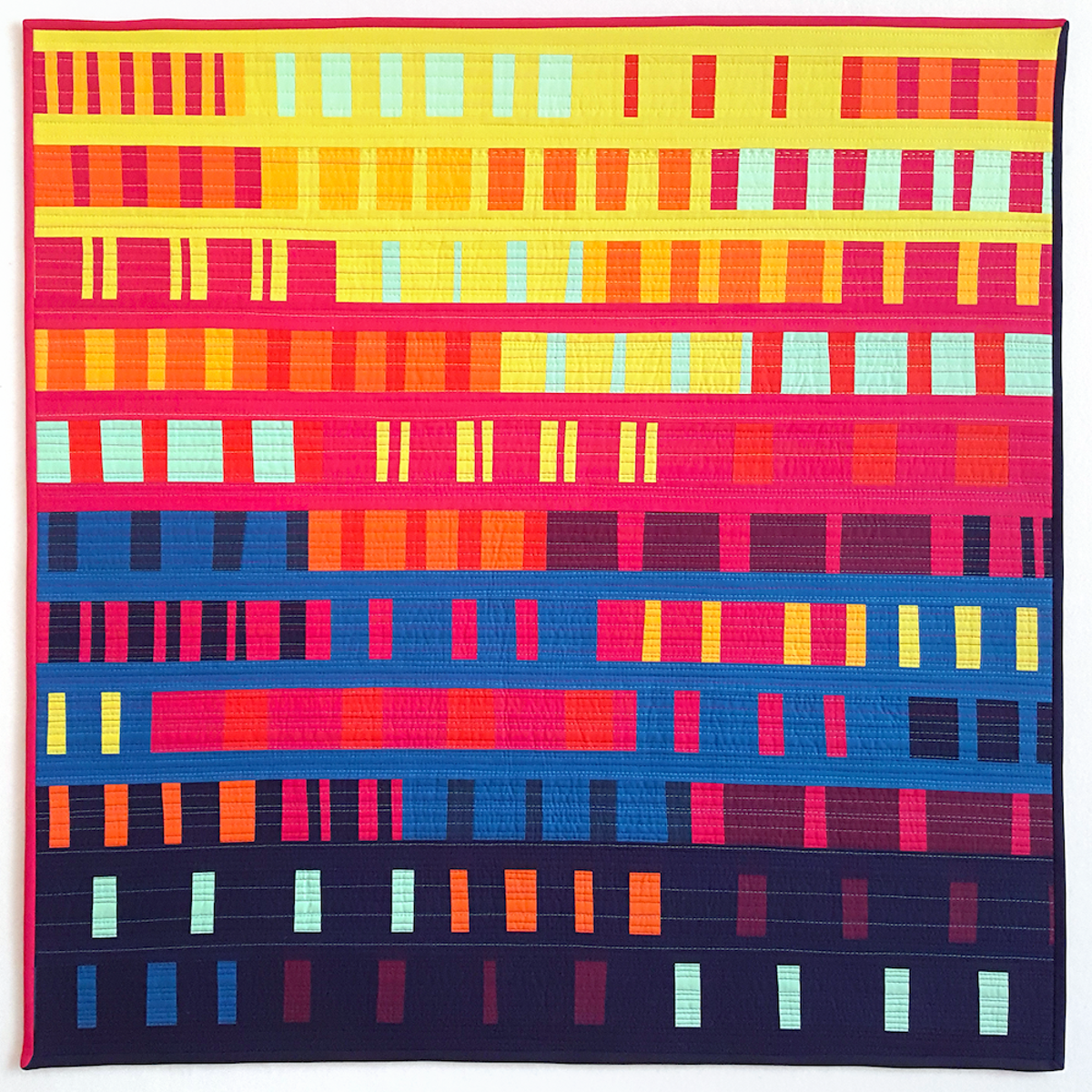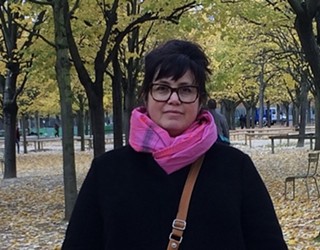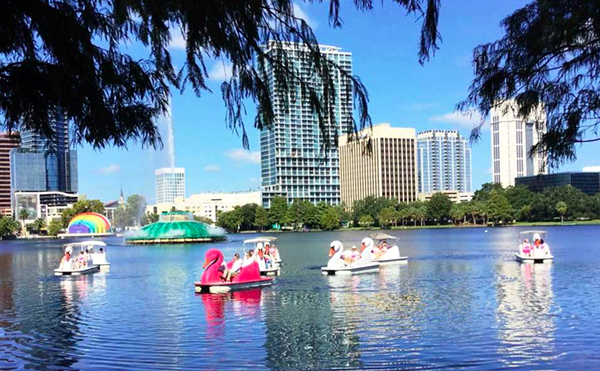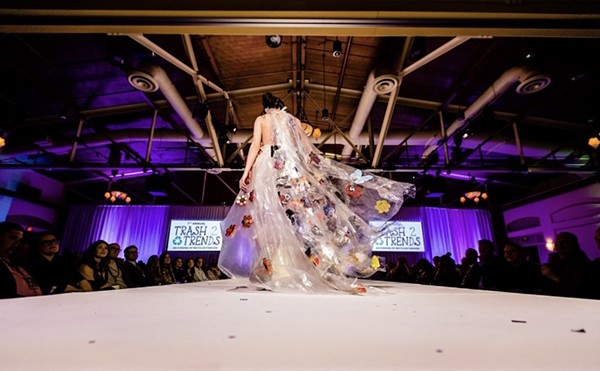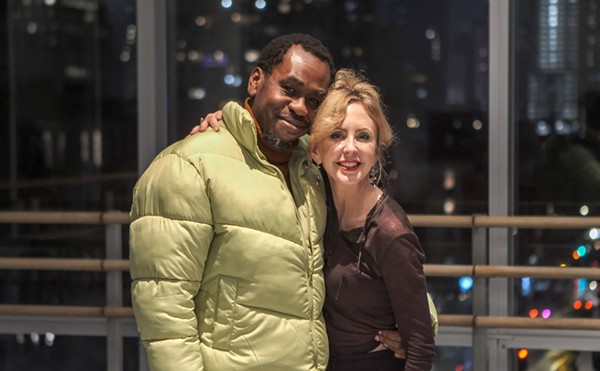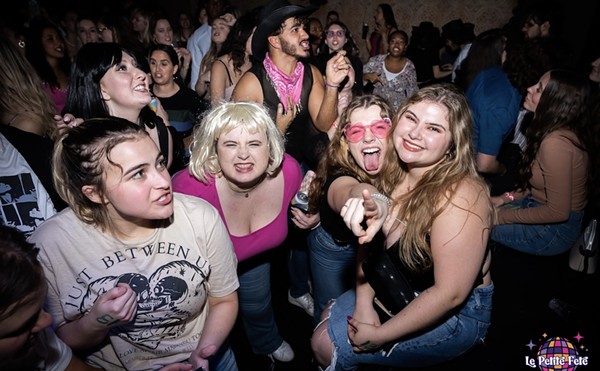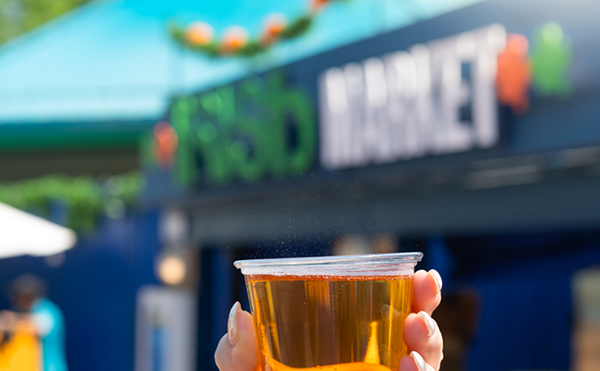Among those in the know, quilting has shaken off its once-fusty image.
"One of the biggest biases I face is just the concept of a quilter," says Orlando quiltmaker Sarah Lauzon. "What do you picture? An elderly woman in a rocking chair? Long prairie dresses and a circle of women sewing on a frame? Today's quilters are a wonderfully diverse group of artists."
Indeed, quilting is making the leap that ceramics once did: It's now considered an art as much as a craft, a medium that is as creative as it is utilitarian – often more so. "[Modern quilting] is work that both expresses emotion and results in a tangible, creative piece of work," says Debra Jalbert, another Central Florida quiltmaker.
Anne Sullivan, whose "day job" is teaching game design at University of Central Florida, concurs. "When I tell people I'm a quilter, I will often follow up with a photo of my work since the quilts I make are not generally what people associate with the term 'quilt.'" Sullivan has even merged her disciplines with a computer game that's controlled with a tabletop loom and results in an actual textile that records all the gamers' moves – certainly not something that would fit in with the "elderly woman in a rocking chair" stereotype.
Lauzon, Jalbert and Sullivan all have quilts in the upcoming International Modern Quilt Show, Feb. 22-25 in Pasadena, California. QuiltCon is produced each year by the Modern Quilt Guild, an organization with 13,000 members in 39 countries over six continents. Asked the difference between traditional quilting and modern quilting, all three women admit that it's difficult to define.
Per the Modern Quilt Guild's website, "It wasn't until the 2000s that quilts with a modern aesthetic began to appear in greater numbers and quilters began to describe themselves as modern. ... Several characteristics often appear which may help identify a modern quilt. These include, but are not limited to: the use of bold colors and prints, high contrast and graphic areas of solid color, improvisational piecing, minimalism, expansive negative space and alternate grid work."
"There is no less skill that is involved in modern quilting, but I feel the genre is more open," Lauzon says. It's up to individual quilters to decide how they want to identify their work, Sullivan says, adding: "I leave it up to future art historians to make the final distinctions."
Another way modern quiltmaking leans toward art rather than craft is its engagement in political and social issues. Although, undeniably, many traditional quilts did the same: Quilts were made to support the suffragist movement, Prohibition and the KKK, said Marsha MacDowell, Michigan State University Museum curator, in the November 2006 issue of Humanities magazine. And historians Jacqueline Tobin and Raymond Dobard published a book claiming that some quilts held codes that served as a "map" for escaped slaves using the Underground Railroad.
Today's socially oriented quilts are no less forthright. Most of us remember the AIDS Memorial Quilt, conceived in 1985 in San Francisco as a way to remember those who had died of the disease. When first displayed, it comprised 1,920 panels and covered a space larger than a football field. Upon its last full public display, in October of 1996, the quilt covered the entire National Mall in Washington, D.C. Today the quilt's more than 48,000 panels are archived in Atlanta.
Sullivan and Lauzon have both participated in similar "protest quilt" actions. Lauzon is involved with the 70,273 Project, a beautiful collaborative project which commemorates the 70,273 physically and mentally disabled people murdered by the Nazis between January 1940 and August 1941. Shortly after Sullivan moved to Orlando, the Pulse nightclub shootings happened. She created a quilt she calls "49" in response.
"'49' is a quilt of loss, but also a quilt of hope. It's a quilt for my new home and my new friends," she says. "But mostly it's a quilt for the 49 people who unfairly lost their lives, and the light they left behind."
Of course, no discussion of quilting is complete without mentioning the quilters of Gee's Bend, Alabama, whose towering work both embodies tradition and points the way to modernity. Jalbert, who was fortunate enough to take a class in 2016 with members of the Gee's Bend Quilters, says their subsequent influence on her work shows in her expression of emotion and freedom of style, while Lauzon thinks their quilts "are an excellent example of the amazing improvisation that can come from working within constraints."
Ultimately, there's no bright line marking the difference between modern and traditional quilting. The abstraction, minimalism, bright color and improvisation that are usually modern signifiers can also be found in the Gee's Bend quilts, while some self-defined modern quilters take on extremely traditional subject matter.
As Lauzon sums it up, "There are some people that think modern quilting is a way around some of the technical challenges that are judging points in traditional quilting, or that it takes less time, or that it's simplistic. This is incorrect. It's like Mark Twain said, 'I didn't have time to write a short letter, so I wrote a long one instead.' Achieving some of the most minimal designs can often be the most difficult."
So, modern versus traditional? As Supreme Court Justice Potter Stewart said in 1964, even if one could never succeed in defining the difference, we know it when we see it.

